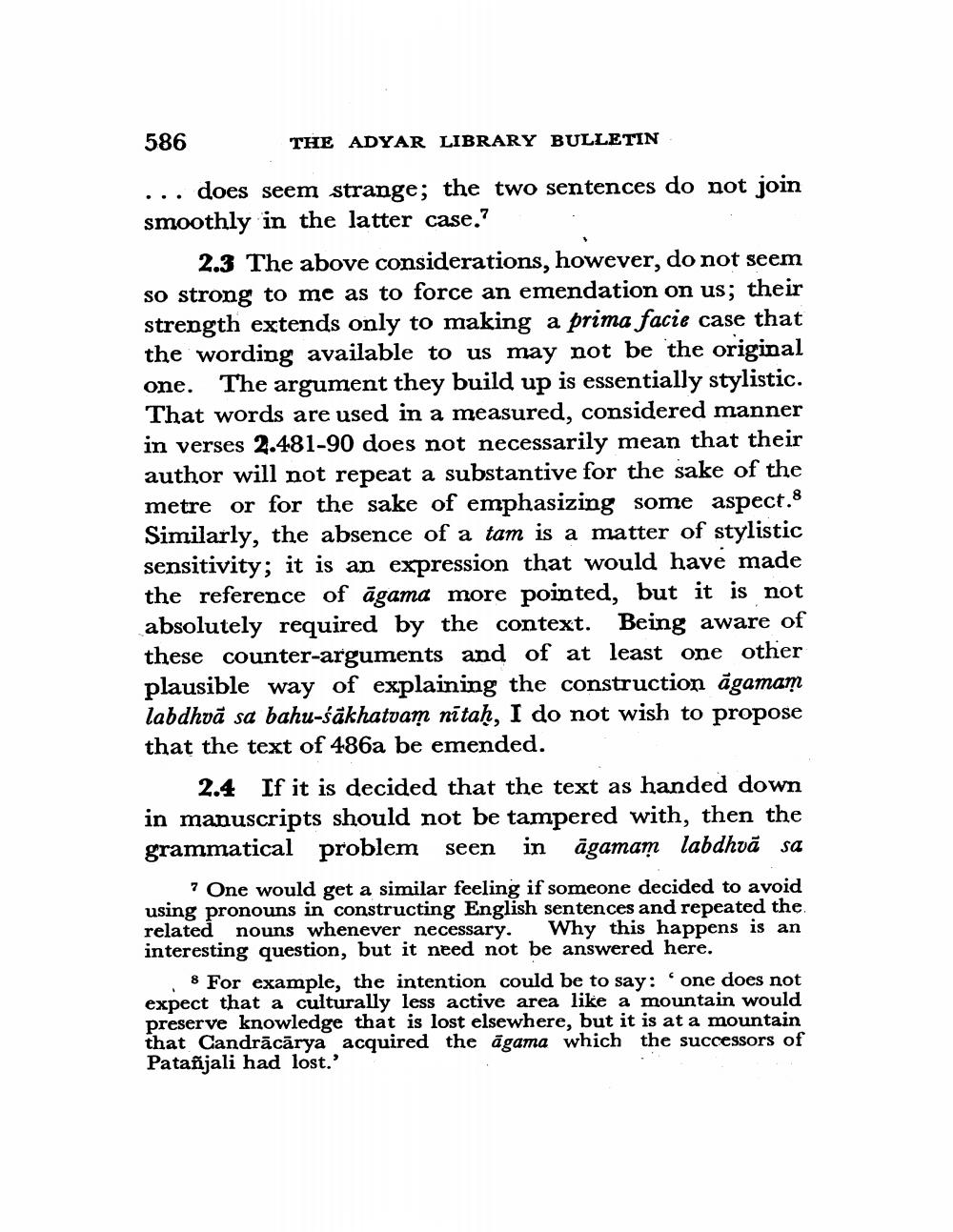Book Title: Interpreting Vakyapadiya Historically Author(s): Ashok Aklujkar Publisher: Ashok Aklujkar View full book textPage 6
________________ 586 THE ADYAR LIBRARY BULLETIN ... does seem strange; the two sentences do not join smoothly in the latter case.? 2.3 The above considerations, however, do not seem so strong to me as to force an emendation on us; their strength extends only to making a prima facie case that the wording available to us may not be the original one. The argument they build up is essentially stylistic. That words are used in a measured, considered manner in verses 2.481-90 does not necessarily mean that their author will not repeat a substantive for the sake of the metre or for the sake of emphasizing some aspect.8 Similarly, the absence of a tam is a matter of stylistic sensitivity; it is an expression that would have made the reference of āgama more pointed, but it is not absolutely required by the context. Being aware of these counter-arguments and of at least one other plausible way of explaining the construction agamam labdhvā sa bahu-śākhatvam nītaḥ, I do not wish to propose that the text of 486a be emended. 2.4 If it is decided that the text as handed down in manuscripts should not be tampered with, then the grammatical problem seen in āgamam labdhvā sa ? One would get a similar feeling if someone decided to avoid using pronouns in constructing English sentences and repeated the related nouns whenever necessary. Why this happens is an interesting question, but it need not be answered here. 8 For example, the intention could be to say: 'one does not expect that a culturally less active area like a mountain would preserve knowledge that is lost elsewhere, but it is at a mountain that Candrācārya acquired the āgama which the successors of Patañjali had lost.'Page Navigation
1 ... 4 5 6 7 8 9 10 11 12 13 14 15 16 17 18 19 20 21
